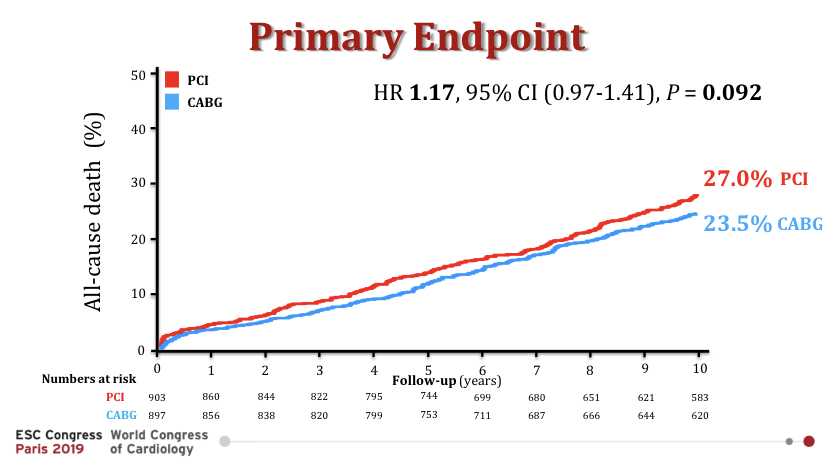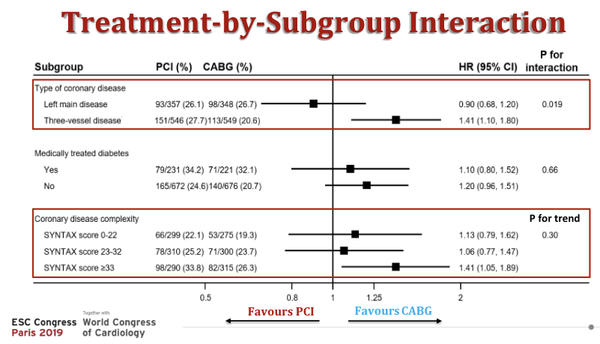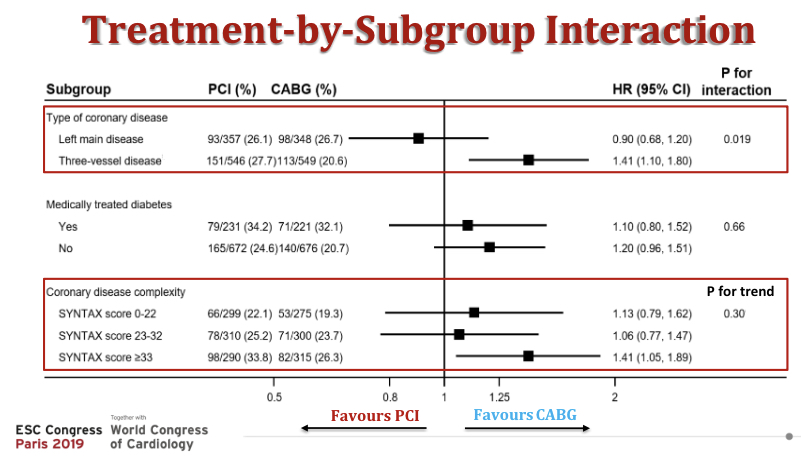SYNTAXES - Ten-year survival after coronary artery bypass grafting vs PCI: the SYNTAX Extended Survival study
Reported from the European Society of Cardiology ESC Congress 2019 in Paris
At the ESC Congress 2019 in Paris, Daniel Johannes presented the results of the SYNTAX Extended Survival study. Read the report by Mirvat Alasnag.
The SYNTAXES Study (SYNTAX Extended Survival) was presented on September 2, 2019, at ESC. The trial was dwarfed by the unexpected results from an array of other late-breaking clinical trials. Yet, I contest it remains one of the most valuable studies to us as interventional cardiologists.
The original SYNTAX study was a landmark trial that examined all-cause mortality (primary outcome) of percutaneous coronary interventions (PCI) compared to coronary artery bypass grafting (CABG). This was a multicenter, randomized trial of 1800 patients with 1:1 randomization (903 PCI and 897 CABG). The enrolled population was a complex cohort that included diabetics, left main disease and three vessel-disease. Since its publication, many trials have been published comparing PCI to CABG. The usual debate has always been the reassuring long-term data for CABG. The SYNTAXES is the first large scale study to provide us with unique 10-year outcomes for PCI, albeit mortality only. Notably, 94% completed the 10-year follow up.
The results demonstrated equivalence in the primary endpoint of all-cause mortality (27% PCI and 23.5% CABG, P=0.092). There was no difference for left main disease (26.1% PCI and 26.7% CABG, P=0.47) or diabetics (34.2% PCI and 32.1% CABG, P=0.56). There was, however, a survival benefit in three-vessel disease (27.7% PCI and 20.6% CABG, P=0.006). In three-vessel disease, the differentiator was the high Syntax Score category >33.





These results are reassuring with respect to diabetic patients, left main disease, and three-vessel disease with a low-intermediate Syntax Score. This is of course in spite of the fact that a first-generation Paclitaxel-eluting stent was used. Furthermore, contemporary practice using potent antiplatelet agents, physiology or image-guided intervention were not part of the study protocol 10 years ago.
Finally, with its impressive follow-up rate, this trial suggests long term follow-up of present-day should be the new standard for trials evaluating outcomes in PCI.
Watch this short interview of Mirvat Al Asnag providing a summary of the SYNTAX Extended Survival study:






No comments yet!